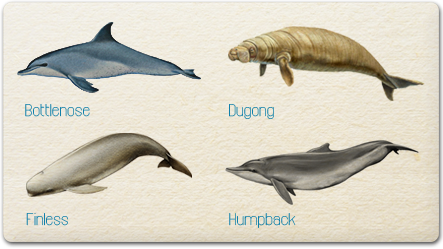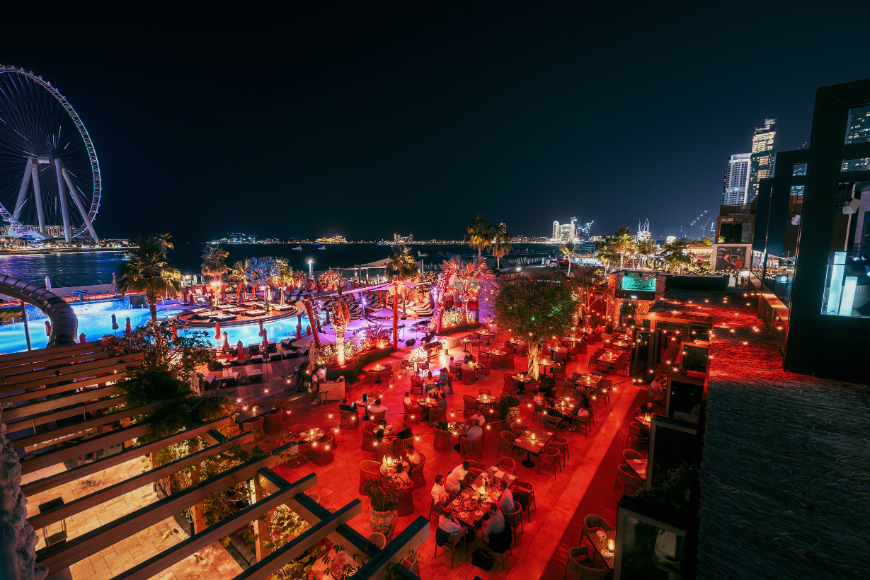We interviewed Dr. Ada from The UAE Dolphin Project to find out more about their great work and how we can all take part and help!
22 April 2013
| Last updated on 28 June 2017
When & why was the project set up?
The idea of starting a dedicated project on dolphins in UAE waters comes from the realization that there is very little information about dolphins from the Gulf both in the scientific field and among the public. Also a dedicated project on dolphins has never been carried out nor in UAE or in the Gulf. The project was launched in December 2012, when the website was created.
What is it that you do?
The UAE Dolphin Project is a non-profit initiative that aims to investigate the dolphin population along the UAE coastline, to provide scientific baseline information and raise public awareness about these species and the local marine environment.

For the scientific part, the target is to collect scientific information to confirm the species that occur in the coastal waters, how many dolphins for each species there are, if dolphins use these waters as migratory route or they are resident here, if the population is increasing or declining. Dolphins are “ecological Indicators” being at the top of the marine food chain, therefore if a dolphin population is doing well, it means that the whole marine environment that supports them is in good conditions. In simple, by studying dolphins we can understand how our sea is doing.
For the public awareness part, the aim is to deliver knowledge about dolphins and their environment and reach as many people as possible. “You love what you care for, you care for what you know.” If people know more about the beauty and the richness of the local marine environment and dolphins, then they will respect it and help to preserve it for our next generation. With this in mind we are trying to involve schools, marinas, diving centers, private and public entities.
Everybody can visit the project website at: www.uaedolphinproject.org where you can subscribe to our Newsletter, or join the project on Facebook or Twitter and keep updated with news about the project, latest dolphins discoveries and the local marine environment.
Who is the team involved in this?
At the moment the team is composed by myself and three other persons that kindly agreed to volunteer for the project, helping with their skills to make this happen. Murdoch University Cetacean Research Unit and the Coastal Marine Mammal Research Unit, Massey University, is also collaborating with the project as external scientific advisors for the research part. The project has also been endorsed by the Marine Environment and Wildlife section of Dubai Municipality.
What can people do to help?
People can do A LOT! Spreading the voice among friends and colleagues, join the project on Facebook and Twitter, sign up as volunteer, but most importantly keep an eye on the sea and REPORT THEIR SIGHTINGS! This information is crucial for the research as there is no information at all about dolphins in these waters.
How can people report any sightings?
People can report sightings by sending an SMS at: +971 566717164, filling the form through our website www.uaedolphinproject.org , through Facebook, Twitter or by sending an email at: [email protected]. Just remember to always report at least this information: date, approximate time and location. GPS coordinates are not necessary, people can simple describe their location using landmarks. If is possible, send us a picture or your videos!
What types of dolphin might be seen in the UAE waters?
About eleven different species of whales and dolphins have been currently reported in the Gulf, but in UAE coastal waters you will most probably encounter three species of dolphins: the Indo-Pacific bottlenose dolphin, the Indo-Pacific humpback dolphin and the finless porpoise. If you adventure offshore, you may also encounter common dolphins, spinner dolphins and maybe whales.

What are do’s and don’ts if you see dolphins?
It is important to know that continuous harassing behavior from boats has detrimental effects on resident dolphin populations. But there are simple rules to ensure that both humans and dolphins keep safe in an encounter Be Dolphin SMART! And enjoy your sighting!
S = Stay back 50 metres from dolphins (100m from whales)
M = Move away cautiously if dolphins/whales show signs of disturbance (sudden change in behaviour)
A = Always put your engine in neutral when dolphins/whales are near
R = Refrain from feeding, touching, or swimming with wild dolphins
T = Teach others to be DOLPHIN SMART
What advice do you have for any avid dolphin watchers?
Whenever you are out at sea, or even at the beach keep an eye on the water, dolphins are more frequent than what we think.
Can schools get involved with your initiative and how?
Certainly! As part of the project public awareness programme we offer school educational talks about the local marine environment and dolphins that can be linked to their curriculum. If students or classes are then interested in getting actively involved, the project also offers subjects that can then be developed by the students themselves, for example as CAS projects. As soon as we will start the research part we will be happy to also involve University students and secondary school students in their final years that can use the project as platform for key research based studies.
Can people volunteer to help and in what ways?
Yes! There are many way people can volunteer for the project. Becoming a project ambassador, helping to raise public awareness for example organizing a presentation in a club that they are members. Or helping during events where the project is invited to present (school fairs or festivals) and if anyone is keen to hard work on the boat and learn more about the research activity, we are also putting together a list of people happy join us on the survey. They will receive a basic training on how the research is conducted and the methodology used, and they will join our team. If anyone is interested in volunteering, just send an email to [email protected] specifying “volunteer” and for which type of activity.
More about Dr. Ada Natoli: Project Director
Ada is a specialist in population genetics with a passionate interest in conservation of species. Her main interests are investigating the evolutionary mechanisms generating population structure, and supporting conservation and management programs.
.png)
Ada holds a degree in Biology and a PhD from the University of Durham, UK, on the molecular ecology of bottlenose and common dolphins, comparing these species and their population structure on a worldwide scale, in the Mediterranean Sea and South Africa. She spent a number of year conducting field research on several projects monitoring the cetacean population in the Mediterranean Sea and Canary Islands for Tethys Research Institute and has published numerous articles in peer-reviewed scientific journals.
She is a member of the IUCN/SSC Cetacean Specialist Group and she has participated to the International Whaling Commission as member of the Italian delegation and invited participant. She is involved in the conservation of cetaceans in the ACCOBAMS area.
Ada joined the Biology Department at UAE University as Adjunct Assistant Professor (no-salary based position) in 2010 with the aim to promote the field of conservation genetic in the local academic environment.
Contact
Website: http://www.uaedolphinproject.org/
Email: [email protected]



























































































![We Tried [u]bk's Lively Garden Brunch at Mövenpick JLT Dubai We Tried [u]bk's Lively Garden Brunch at Mövenpick JLT Dubai](https://cdnexpatwomanfood.expatwoman.com/s3fs-public/urban%20bar%20and%20kitchen%20brunch%20main.png)























.png?itok=EH_x0Pha)
















